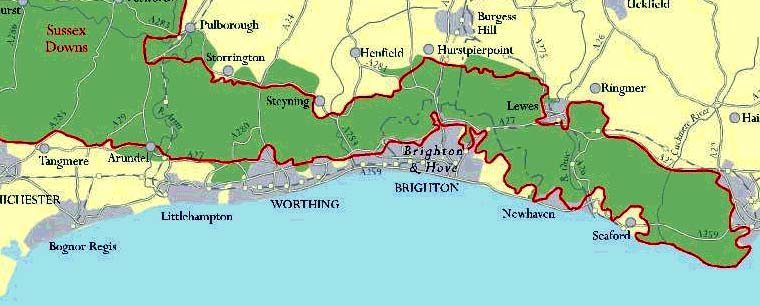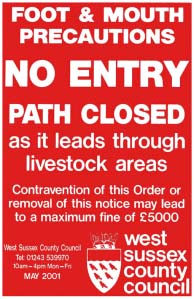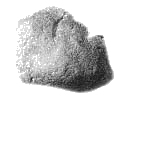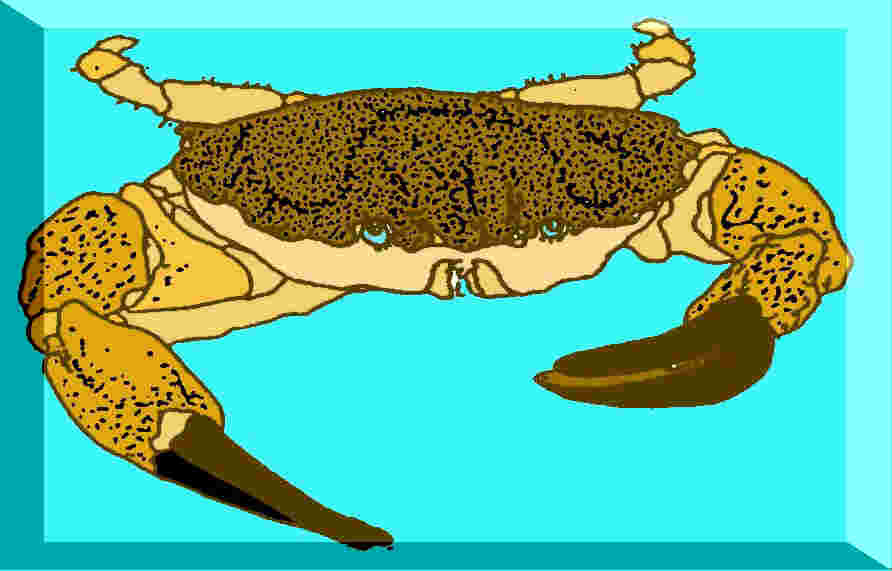
|
NEWS BULLETIN FOR THE ADUR VALLEY |
| News & Events |
| Wildlife Reports |
| Words of the Week |
| Historical Snippet |
| Advertisements |
If
you wish to receive this Bulletin, please ask by EMail, specifying the
Adur
Torpedo with your full name.
Glaucus@hotmail.com |
| Web Sites (Local) |
| Poem |
| Computer Tips |
| Games & Leisure |
| Web Sites (****) |
| Events |
|
|
| Adur
"World Oceans Day"
SLIDE SHOW 2000 |
 |
| Wildlife Web Sites |
 |
| LOCAL
ORGANISATIONS |
| LOCAL RESIDENTS PAGE |
|
|
|
|
|
|
|
|
|
|
|
|
|
|
|
|
|
|
|
|
|
|
|
|
|
|
|
|
|
|
|
|
|
|
|
|
|
|
|
|
|
|
|
|
|
|
|
|
|
|
|
|
|
|
|
|
|
|
|
|
|
|
|
|
|
|
|
|
|
|
|
|
|
|
| 55 | 56 | 57 |
| 58 |
|
|
| 61 |
|
|
|
|
|
|
|
|
|
|
| 70 |
Shoreham-by-Sea and the Adur Valley & District, West Sussex, England
Local News
THE ROYAL ESCAPE
(350th Anniversary)2001 is the 350th anniversary of the Royal Escape by King Charles II on 15 October 1651 (Modern Calendar) from Shoreham. There is an Exhibition at the Marlipins to celebrate the event.
After the Battle of Worcester (3 September), Charles II had to flee from the Cromwellian forces. He eventually made his way to Bramber were he had to cross the substantial bridge over the River Adur. The route, now called Monarch's Way runs over the downs via Thundersbarrow, Whitelot Bottom and Southwick Hill (although Colonel Gunter's account said they proceeded by the Shoreham road to Brighton). The story then says he ventured to Brighthelmstone (Brighton) where he met the skipper of the Surprise, Tattersall, in a pub called the George. The King and Tattersall and crew boarded the brig "Surprise" which departed from Shoreham (15 October) for Fécamp in France when the tide was right.
Royal Escape (SussexPast messages, selected)
Occam's Razor applied (Accounts of the Escape)
Royal Escape Team
Royal Escape (Notes)
Charles II Messages on Sussex Past (unedited search)Conjectural Map of the River Adur course in later medieval times (Link)
I did get a quick look in at the King Charles II Exhibition at the Marlipins Museum, Shoreham-by-Sea on 25 May 2001. Quick, because I wanted to take advantage of what may have been the last fine weather
There is at least 30 minutes worth of looking and the exhibition contains much more information and is better than I expected. More in the next Adur Torpedo.
Oak Apple Day
Watch out you Republicans !29th May
The wearing of a sprig of oak on the anniversary of Charlie's crowning (1660) showed that a person was loyal to the restored king. Those who refused to wear an oak-sprig were often set upon, and children would challenge others to show their sprig or have their bottoms pinched. Consequently, this day became known as Pinch-Bum-Day. In parts of England where oak-apples are known as shick-shacks, the day is also known as Shick-Shack Day. It is also likely that the royal association conceals a pagan tradition of tree worship.
The 25th Royal Escape Race from Brighton started this year on 25 May 2001.
Royal Escape 1651
The precise departure point is a matter of some conjecture. The Surprise was moored in a creake (creek) and the two most likely possibilities are Copperas Gap (now part of Southwick in the dip between Fishersgate and Portslade) and Silver Sands (now part of Shoreham) but this is only my opinion. Copperas Gap might be the favourite because the Colonel Gounter narrative did not mention Shoreham, only the King Charles II account mentioned Shoreham as the actual port of departure.
If you favour the King's account, Silver Sands is the better choice. The entrance of Shoreham Harbour in 1671 was about there (arguable ?) (The English Pilot 1671).
South Downs National Park : Proposed Area
http://www.countryside.gov.uk/reception/papers/Areaofsearchmap.jpgClick on the URL for the complete map
The footpaths to Lancing Ring are now open.West Sussex County Council announce most paths are now open, unless they are inhabited or used by farm livestock, or farm animals are nearby.
The cycle path from Old Shoreham is officially open.
Please send any comments to: Andy Horton
Glaucus@hotmail.com
Wildlife Reports24 May 2001
A large (slightly larger than a goose egg) greenish speckled egg rolled down Ham Road outside the Morning Star Public House. I suspect that this was broken egg belonged to one of two pairs of Herring Gulls reported as trying to breed on the the large flat roof of the nearby Adur Civic Centre.Report by Andy Horton with the breeding information from TimUK Birding Discussion Forum24 May 2001
The sea off Sussex and probably all along the eastern English Channel is exceptionally clouded with plankton forming long strings in places. This is the species Phaeocystis pouchetti known colloquially as Slobweed and other names.
British Marine Life Study Society News 200123 May 2001
A particularly beautiful damselfly caught my eye as it settled on Southwick beach promenade wall next to the timber yard. It had a particularly brilliant metallic emerald green head and thorax and an elegant metallic light blue abdomen. There did not seem to be any distinctive markings on the delicate wings. It may be a female Ischnura elegans known as the Blue-tailed Damselfly. However this identification is by no means confirmed.
UK Dragonflies Discussion Group21 May 2001
The ctenophore (comb-jelly) Sea Gooseberry, Pleuribrachia pileus, is both ubiquitous and superabundant pelagically in the NE Atlantic Ocean, but on the low springs (0.4 metre) at Kingston beach in the early evening was only the second time that I have actually discovered this animal that appears as transparent globules in the prawn net. In a miniature aquarium, the two long tentacles tangle underneath and the swimming combs of this tiny ovoid predator appear to shimmer. At night it is phosphorescent.
Marine Wildlife of the North-east Atlantic Ocean Group20 May 2001
For my first sighting this year of Orange Tip Butterfly but had to go to Sussex Wildlife Trust HQ at Woods Mill, Small Dole, Sussex.Report by Ray Hamblett
18 May 2001
Taking advantage of the newly re-opened cycleway from Old Shoreham to Beeding, the adjacent towpath was covered in a fine mat of grass. A Kingfisher flew straight as a dart with something large and white in its beak, and a Peacock Butterfly settled on the grasses, notable as my personal first note of this butterfly on these notes. Other butterflies fluttered amongst the nettles.
In the field opposite the Cement Works, on the western side of the Adur including the towpath, both cows and sheep grazed.Lancing Nature & History - May 2001 Newsletter
(Link to the web site by Ray Hamblett)
- Wildlife
Web Sites

Freshwater Life of North-western Europe EFORUM PAGE |
The British Marine Life Study Society has an alternative web site address for its Homepage only:
1 August
2000
The
Marine Wildlife of the North-east Atlantic (formerly
the British Marine Wildlife Forum)
***** commences.
PLEASE
JOIN

MARINE WILDLIFE of the NORTH-EAST ATLANTIC EFORUM PAGE |
http://groups.yahoo.com/group/ukwildlife

UK Environment and Planning EFORUM PAGE |
British
Naturalists' Association (link)
Find
the Sites of Special Scientific Interest using this link:
Friends
of the Earth SSSI Navigator
- Words
of the Week
Quote for the purposes of review:
Building with Chalk
It has been noted that 'Chalk
(except for a few special varieties), cannot be successfully used in building
unless it is studied and codified, its weaknesses understood and guarded
against'. Chalk indeed was usually too soft and lacking in durability to
be suitable for building, at least for exteriors, in contrast to the Oolitic'
limestone of the Cotswolds, for example, which provides the finest of building
stones. There are, however, some more compact beds of chalk at the base
of the northern escarpment which contain tiny fragments of shells and other
impurities which produce a more gritty texture. This is called 'clunch',
a word evocatively conveying a sense of its soft, yet dense and resistant
quality. Clunch is hardest in
the Western and the East
Hampshire Downs and was widely used for the exterior walls of farmhouses,
cottages and barns in the Meon valley and eastwards along the northern
escarpment towards Duncton as at Cocking, EIsted and Harting. On account
of its inability to resist rainwater, clunch had to be protected by wide
eaves from rain-bearing winds, and by a foundation course to keep it clear
of the ground, generally a footing of sarsen stone. To a lesser extent
it was used near Lewes, as in barns at Hamsey. Several church interiors
are modelled in clunch, including Burpham in the Arun valley.
Local builders have now forgotten how to select or handle chalk, and no longer trouble to use it, although there was a local saying, 'Find Chalk a good hat and shoe and it will serve You well".
Excerpted
from "South Downs" by Peter Brandon (of Shoreham).
page
27
(Philimore
1998)
ISBN 1 86077 069 X
Clunch is a hard chalk used as a building stone - see Coombes Church and many other similar old buildings.
We usually think of Chalk as a 'soft' material, but it is very variable in colour, composition etc.
- Star: Latest Virus Information

Small Publisher EFORUM PAGE |
Computing
Net Support Site
(for computing problems) ****
http://computing.net/windows95/wwwboard/wwwboard.html
The upsurge of EFora
on all subjects (a
few have been recommended before in these bulletins) are an important way
in which the Internet
will change the world.
A list of recommended eFora
will appear soon. Please make any suggestions.
- Poem
of the Week
As Bob Dylan has turned 60, I thought I would dredge up something from the mid 1960s.
Disillusioned words like
bullets bark
As human gods aim for their
mark
Made everything from toy
guns that spark
To flesh-colored Christs
that glow in the dark
It's easy to see without
looking too far
That not much
Is really sacred.
It's alright, Ma, I'm only Bleeding (extract)
- Archaeology
in Sussex to AD 1500 ****
WSCC
LIBRARY *****
Excellent
and essential service with a full catalogue of books, CDs, videos,
on-line renewals, book ordering.
- The
Glaucus 2000 CD-ROM includes the complete Shoreham-by-Sea
and Adur
Valley web sites, as well as shareware and free programs
Sussex
& the Downs Discussion Group (with new images of Sussex)

ADUR VALLEY EFORUM PAGE |
 |
- Historical
Snippets
1) In which year did King
Charles II escape from Shoreham ?
1651
(Link)
2) What King landed at Shoreham
in 1199 and went on went on to be crowned King of England ?
John
3) In which European city
is there a bridge with a similar design to the old Norfolk Chain bridge
?
Budapest
4) Which seaman sailed with
Captain Cook and witnessed his death in Hawaii, and eventually became a
ship's Captain himself ?
Captain
Henry Roberts
5) What is the name of the
church with a Rhenish Saxon tower in Sompting?
The
Church of St. Mary
in Sompting is the most striking examples of Anglo-Saxon architecture in
all of England. Its primary distinguishing feature is the Rhenish Helm
or Rhineland Helmet of the tower. This is the only known Anglo-Saxon example
of this style. The Saxon timbers can still be found inside the relatively
low spire. The tower also contains Roman bricks. (Link)
6) In what century was the
original bridge over the Adur at Old Shoreham built ?
1781
(18th century) (Link)
7) In which town or village
or parish in Adur was a Roman villa discovered ?
Southwick
8) What was the former name
of the Marlipins Inn ?
Ship
9) What use was previously
put to Lancing Industrial Estate (Commerce Way) south of the railway station
?
Lancing
Carriage Works
10) In which century was
the Old Fort on Shoreham beach built ?
19th
century
1857
The Old Fort on the Shoreham Beach side of the Shoreham Harbour entrance
is completed. It was inhabited until 1920.
Sussex Archaeological Society
http://www.sussexpast.co.uk
Sussex Archaeological Society
http://www.sussexpast.co.uk
SUSSEX
PAST
Sussex
Archaeological Society EGroup
- Events
28
May 2001
VINTAGE
CAR RALLY (Afternoon) AND FUN FAIR (Afternoon and Evening)
Buckingham
Park, Shoreham-by-Sea
|
18 April 2001 Adur Festival Programme The Adur Festival programme has been delivered to Adur residents and is available at the Civic Centre with lots of exciting events, including World Oceans Day, Glastonwick, Beach Dreams, Escape of King Charles II, Marlipins Museum Exhibitions, Music Workshops and Performances including Richard Durant, John Renbourne, The Hofners, Harry Strutters, as well as Adult Education, Art Exhibitions and Talks, Special Religious Services, Comedies and much more.
|
Adur World Oceans Day 2001
Please express any interest before 30 April 2001:
Andy Horton (British Marine Life Study Society)
Glaucus@hotmail.com
or
Natalie Brahma-Pearl (Adur District Council)
natalie.brahma-pearl@adur.gov.uk
BIODIVERSITY DISPLAY
at Adur Civic Centre
Ham Road, Shoreham-by-Sea, West Sussex.Monday 4 June 2001 to 15 June 2001 weekdays.
If you wish to contribute please contact:
The first contact is:
Andy Horton Glaucus@hotmail.com
Tel: 01273 465433
I will need details of your exhibits, so the preferred method of the first communication is by EMail with full details.
- Adur
On-line Events page
- http://appspace.nexus-solutions.net/arc/asp/diary/diaryoutput.asp
- Please send in any details of local events.
- Web
Sites
American
Heritage Dictionary of the English Language:
Fourth
Edition *****
>
- SPONSORSHIP OPPORTUNITY
For any company or organisation wanting nationwide green publicity, there is an opportunity to sponsor the journal "Glaucus" of the British Marine Life Study Society.
There remains sponsorship opportunities on the BMLSS (England) web site and other publications, including Torpedo.
Sponsorship is also available for the Adur Torpedo Electronic News Bulletin and the Shoreham-by-Sea web pages (which preceded the Adur Resource Centre web site), which would be more suitable for a local firm(s).
Web Site Design Services are available from Hulkesmouth Publishing
Normal
advertisement rules apply.
Submissions
accepted by EMail only.
Adur
Torpedo was written, designed and distributed by Andy
Horton.






